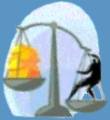Getting Your Site Right
by Jane McLain
If your site traffic is increasing but your sales are not, your website itself could be the problem. This checklist will help you get it right.
>> Recommend this article to a friend
If you've been working hard to bring new visitors to your site and your traffic is increasing -but your sales aren't - maybe your website itself is the problem. Unless your visitors feel motivated to explore your site and your offerings, all your marketing efforts will be wasted. With the competition only a click away, having a top-notch website is a must. Use these guidelines to get it right:
Your pages load quickly. Do your Web pages load quickly, or do site visitors give up and leave in frustration? A good rule of thumb is the "Eight Second Rule", meaning the page loads in eight seconds or less over a 28.8K modem. Fast loading pages are espeically important if you hope to attract international customers, since Net users in other countries may well have slower Internet access.
Your home page is inviting. Your home page is a lot like a shop window in the offline world. If it's appealing, people will come in and look around; if it's not, they'll move on. Your home page should make a good first impression and quickly tell visitors who you are and what you have to offer. Let them know what they'll find inside and how they will benefit from your products or services.
You've got the right look. Is your website making the right impression? A professional-looking and well-designed site establishes your credibility and builds trust. Gratuitous graphics, annoying animations, and banner overload make a website look cluttered and overwhelming. Stay focused on your sales message and use graphics to support and enhance that message. Colors should harmonize and "fit" with your corporate image and the nature of your business.
Your site is easy to navigate. Help your visitors get to the information they need quickly and efficiently. As a general guideline, no content should be more than three clicks away from the home page. Be consistent in the layout of each page and where you place the links to other pages of your site. If your site is very large and complex, add a site map and/or site search feature to help people find their way around.
Your content is easy to read. Reading content online is more difficult than reading the same content in print. Be succinct, get to the point, and keep your paragraphs fairly short. Don't use industry jargon or technical terminology unless you're sure your audience will understand it. Use headlines and bullets to organize your text. Forget the fancy fonts, and include plenty of white space.
Your site is sticky enough. Offer something of value on your website in addition to making your sales pitch. Providing content like articles, links to resources, online tools, discussion forums, and news headlines shows your visitors you understand their needs and give them a reason to return to your site and recommend it to others.
Your site inspires trust. Because it's fairly easy for someone to start an online business, and even easier for them to fold their tent and disappear, you need to work hard to establish your credibility and earn your visitors' trust. Potential customers want to know about your company and the people behind the products and not just the products themselves. Providing contact information, including a phone number and street address, shows them you're for real and you run a legitimate business. Use examples, success stories, and testimonials to support your claims.
You tell the whole story. Make sure you provide enough information for visitors to make a decision about buying. Don't hide your prices in some obscure corner of your website - be up front about pricing information. Tell potential customers about your shipping practices and return policies and how you will handle their personal information and protect their privacy. Provide an FAQ section and offer to answer any additional questions by phone or email.
You go beyond telling to selling. It's not enough to describe your products or services in detail. You need to tell your visitors know how they will benefit from buying them. Tell them how you can save them time or money, solve their problemw, boost their productivity, enhance their image, help them find customers, or otherwise improve their bottom line.
You make everything perfectly clear. Make sure you provide enough information for your customers to completely understand your product descriptions and instructions for placing an order. Explain the features and benefits in terms the average reader will understand (including readers from other countries, if you're trying to reach a global market). If you offer several different versions or price plans, use a comparison table to explain the options. Don't risk losing a sale because your site visitors feel confused, frustrated, or overwhelmed.
You solicit visitor feedback. The best way to find out how your site visitors feel about your website is to ask them. You could do this on your contact page or as part of your confirmation message after they make a purchase. Not everyone will take the time to answer, but those who do will give you helpful insights into how well your website is working from the customer's perspective.
The key to running a profitable online business is the ability to turn visitors into customers. Make a good first impression, meet their expectations, and earn their trust. Give them a reason to stay, look around, and check out your offer. Make it easy for them to find out about your products or services, and most importantly, make it easy for them to buy.
Related articles:
A Website Checklist
Ten Steps to a Winning Home Page
Writing for the Web
|

